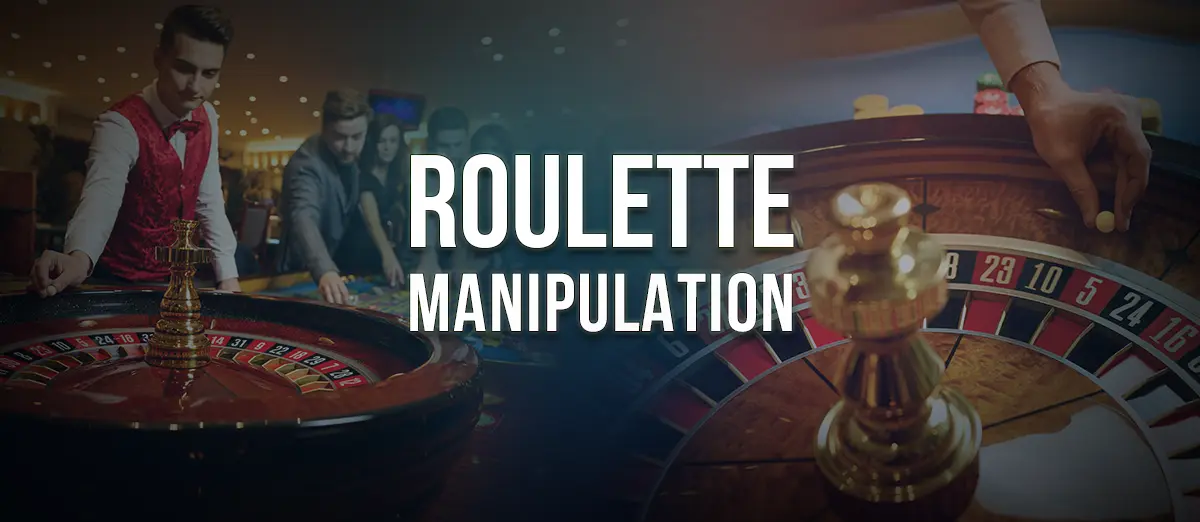R. Paul Wilson On: Roulette Manipulation and Secrets of the Spin

The essence of gambling lies in the fair and random element that forms the backbone of numerous games. These games are crafted with rules that provide appealing odds to players, enhancing the thrill of wagering on future outcomes.
Though we'll delve into the complexities of true randomness in digital systems in another piece, today's focus is on roulette. We'll uncover the myriad ways in which cheaters, swindlers, and unscrupulous gaming venues have manipulated outcomes or influenced the wheel to their advantage.
It's fascinating how often I'm confronted—challenged, not merely questioned—about the potential for cheating in seemingly straightforward games like roulette from either side of the table. External cheating tactics often revolve around the past posting strategy, where bets are placed after the ball has settled on a number. Legitimately, some players can outsmart the game by spotting natural biases in the wheel that hint at where the ball might land, allowing bets to continue on the layout.
In reality, no roulette wheel is perfectly unbiased, but meticulous upkeep can render professional casino tables nearly unpredictable. Yet, as any seasoned roulette advantage play specialist would attest, even wheels fresh from maintenance may exhibit a consistent drop point from the upper rim into the rotor—a goldmine for those keen on forecasting outcomes.
But what about when the tables are turned, and the house cheats the players?
The Hidden Mechanics and Devices behind Roulette Manipulation
A reader recently reached out with a tale of an old HC Evans wheel, discovered to be a roulette rigged with a clandestine device designed to alter the game's outcome. This device, a small pin hidden within the wheel, could be triggered to disrupt the ball's spin and guide it toward the numbered slots. Operable from two locations at the table, it allowed a dealer to strategically "pop the ball."
Interestingly, this method wasn't far removed from the tactics employed in Al Capone's covert brick-and-mortar casinos. While it's plausible that Capone's operations were universally rigged, the mechanism raises a curious question: how does forcibly dropping the ball constitute cheating, especially when directing it to a specific slot, seem implausible? Let's explore additional methods of roulette manipulation.
Weighted wheels incorporate a lead slug beneath one side of the rotor, slightly tilting the entire assembly so that gravity influences both the ball and the rotor. Over numerous spins, this subtle bias encourages the ball to land on numbers adjacent to the concealed weight. Strategically placing this weight under the 0 or 00 slots skews red/black bets significantly in the house's favor.
Another ingenious technique involves inserting a blocker into the wheel—a simple, color-matched wire device designed to fit snugly into a numbered slot, rendering it virtually invisible when in motion yet effectively preventing the ball from settling there. Employed by dealers or their accomplices, this method subtly shifts the odds.
Such devices can be discreetly added to any standard wheel, strongly affecting the mathematics behind the roulette wheel and illustrating that not every game is played on an even field. Manufacturers like HC Evans and TR King have historically offered "gaffed" versions of their products, indistinguishable from their fair counterparts, with the complexity and nature of these modifications tailored to the buyer's preferences.
More sophisticated mechanisms may include tiny, concealed wires that obstruct certain numbers during the spin or a rotor designed with subtly raised slots, making the adjacent number more likely to capture the ball. While encountering such a wheel is rare, it's not unheard of, and collectors sometimes stumble upon historic, rigged roulette wheels that may have deceived players for decades.
One anecdote recounts the purchase of a wheel from a defunct private club, so heavy that it required six men to load it—a clear sign of tampering. Hidden within was an electromagnetic system designed to subtly influence the ball's movement, a testament to the lengths to which cheaters will go.
Subtle Sabotage and the Strategic Use of Rigged Roulette Wheels
Though manipulating a roulette wheel to land on a specific number is theoretically possible, it's hardly reliable or subtle. The unnatural behavior of the ball would likely betray the scheme, underscoring the constant battle between casino security and the inventive minds of cheaters. Revisiting the utility of these devices for the house, let's delve into their strategic application.
The mechanism enabling the ball to drop at will doesn't aim to pinpoint a specific number directly. Instead, its purpose is to circumvent a particular outcome, especially when hefty bets are at stake. Imagine a scenario where a high roller, Mr. Whale, stakes a million dollars on number 25. In such cases, a tampered wheel could trigger the ball to dislodge from the upper rim just as the targeted number whizzes by, significantly increasing the likelihood of the ball settling on the opposite side of the rotor.
Recall the early scene in the movie "The Sting" featuring Robert Redford as "Hooker," who bets three thousand dollars only to watch his potential winnings vanish as the dealer covertly activates a hidden mechanism under the table. The dealer's remark underscores the peril of inadvertently allowing such a bet to win.
However, not all manipulations exhibit such finesse. In the underbelly of illicit gambling dens, some less scrupulous operators have resorted to physically altering the wheel, such as filing down its spokes to skew the odds in their favor. Yet, this type of tampering tends to be blatantly obvious if the wheel ceases to spin, revealing clumsy alterations.
Consequently, in these shadier establishments, the priority often lies in ensuring the smooth operation of any rotor compromised by such crude adjustments. Sometimes, the tampering is so severe that the modified spokes practically guide the ball toward the zeros and double zeros, creating a deceptively smooth path to the house's advantage.
It's therefore essential these crooked wheels keep turning so in the shadowy corners of dishonest casinos, the saying 'greasing the wheels' takes on a literal—and crucial—meaning!
Beneath the Spin
The world of tampered or rigged roulette mechanisms extends far beyond the realm of grand gaming tables, embracing even miniature roulette wheels that can be manipulated through various ingenious methods.
Some of these techniques are so subtle that they remain undetectable even under close scrutiny. Remarkably, I've encountered a modest, plastic "play casino" set ingeniously modified to favor a specific outcome, its cheap exterior belying the crafty bias engineered within.
The lesson here is clear: never underestimate the creativity of a determined cheat. Always entertain the notion that the game before you might involve elements that skew far from mere chance. And for those who possess an antique roulette wheel or table, consider the possibility that it harbors secrets unknown even to its former custodians.





Review this Blog
Leave a Comment
User Comments
comments for R. Paul Wilson On: Roulette Manipulation and Secrets of the Spin